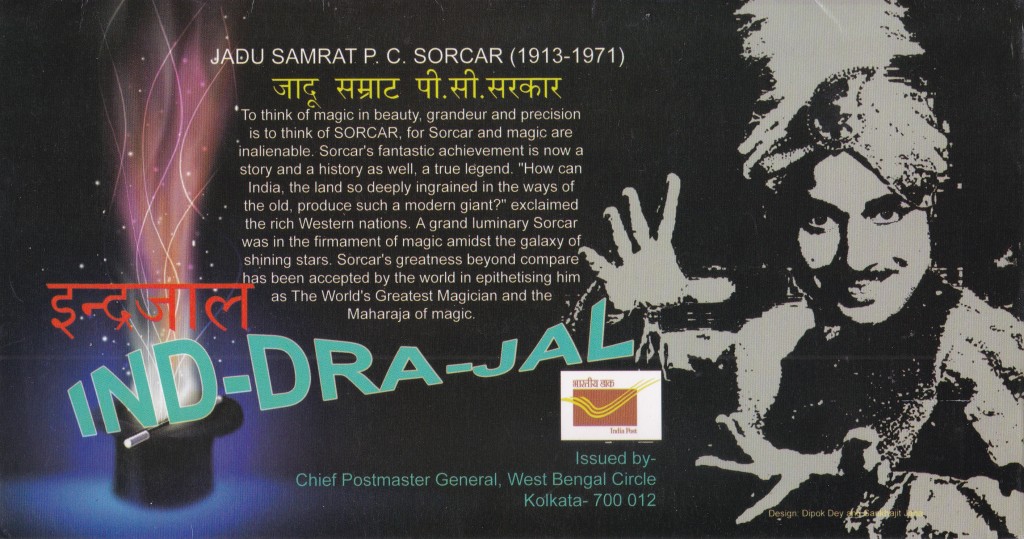It is sometimes easy to forget, amid the ramblings on politics and culture, and religion, even cricket, that India is a magical place both literally and figuratively. Magic has always played an important part of the cultural makeup of this country. Much like the storytellers who go from village to village, narrating myths and legends, or the community of ropewalkers and acrobats who entertain in the middle of a busy street with feats of daring, there is also a community of artists whose profession is to shock and awe with the help of the supernatural, and the impossible. They are street magicians.
This then, is the subject of John Zubrzycki’s thoroughly researched epic – Jadoowallahs, Jugglers and Jinns: A Magical History of India. It is an exhaustively entertaining book that takes the reader on a journey from the court of Mughal Emperor Jehangir to the streets of Delhi in modern India.
Zubrzycki drew upon a wealth of narratives and anecdotes for his research. From traditional Greek travel accounts to eyewitness accounts of merchants, traders, courtiers, chroniclers, and even kings, to libraries, newspaper clippings, magic journals, and personal interviews, Zubrzycki used all to write this account. So exhaustively large is the story that the author has chosen to tell, that it will feel largely incomplete despite the depth and extent of the narrative before the reader.
Indian magic has existed for a really long time. According to Zubrzycki’s own reckoning, there seems to be hints, even actual verses, in ancient texts as old as the Atharva Veda. Clearly, Zubrzycki has found a very extensive goldmine to write about. It is probably one of the most fascinating stories to come out of the Indian Subcontinent, and Zubrzycki has taken great pains to ensure that the narrative is flowing, succinct and enjoyable, and has succeeded in his endeavour – something that is will be made aptly clear to anyone who decides to give this book a try.
“India’s pantheon of magicians – jadoowallahs, tamashawallahs, jadugars, madaris, mayakaris, maslets, qalandars, sanpwallahs, sanperas, katputliwallahs, bahurupis, peepshow-wallahs, the list goes on – ranges across creed and caste. Stronger than religious ties, is their association with the barah pal, the brotherhood of twelve, an ancient collective of strolling players that includes jugglers, snake charmers, animal handlers, puppeteers, ventriloquists, storytellers, impersonators and acrobats. Regardless of their backgrounds, members of this peripatetic brotherhood can share a cooking hearth made out of three stones whenever their wanderings bring them together. Economic changes are breaking down what were once strong bonds between these communities. But their arts of legerdemain live on as an integral part of the social, cultural and religious fabric of India as they have for millennia.” (pg. 10-11)
Surprisingly, according to Zubrzycki, there is hardly any scholarship on the subject of Indian Magic. That is how Zubrzycki’s book was conceived. During the course of the 19th Century and early 20th Century, the mysticism and grandeur of Indian magic was strange enough that there were many anecdotal accounts written about it by English men and women who witnessed the tricks first hand. “Even Harry Houdini started his career posing as a ‘Hindu Fakir’.” (pg. 19)
These legends and tales of magic from the Land of India had existed since ancient times. The Greek physician Ctesias listed the races of fantastical people living in India as early as 400BCE. There were several such instances. The Greeks wrote extensively about the marvels of India. And they weren’t the only ones. Over time, the feats of magic witnessed by Kings and Queens of India were recorded by courtly scribes and later translated and read by Westerners, increasing the mystery of India. In fact, so unreal and supernatural did these recorded feats of magic feel, that the mystical magical lands of India were living up to their reputation. Afterwards, when they witnessed it first-hand themselves, the western audience was even more enamoured of India and the marvels it had to offer.
A chapter that is surely going to take the reader by surprise is the one that Zubrzycki has dedicated to Motilal Nehru, the barrister and father of Jawaharlal Nehru, the First Prime Minister of India. Zubrzycki found a letter during his research written by Nehru to the Protector of Emigrants in Bombay. “I have just learnt that in order to send a party of Indians consisting of performers, musicians, acrobats and artisans to the ensuing Paris Exhibition it is necessary to obtain a permit from the Protector of Emigrants. As I am about to send such a party, I beg to state the necessary particulars for your information.” (pg. 241) The chapter takes a heavy-handed look at the state of immigration laws imposed on Indians by the British.
One of the most interesting aspects of the book is the exploration of the most famous of all Indian magic tricks: The Great Indian Rope Trick. The trick was written about in many histories, even in the Jahangirnama, as a feat that was both strange and surprising. It was the subject of much speculation and debate between Indian and Western magicians, with neither being able to successfully accomplish the trick without the use of props. It was a trick that “that was the most marvelous of all and would become the benchmark against which all feats of Indian magic would be measured.” Zubrzycki dedicates an entire chapter (13) to the trick and details its further history in the next chapter. Zubrzycki also tells the history of P.C. Sorcar, arguably the greatest Indian magician, in the final chapter of the book.
As a self-proclaimed skeptic, Zubrzycki states at the onset that his intention is, quite literally, only to present a history of Indian Magic. in order to do so, he refrains from giving away the secrets of any of the magic tricks he has witnessed. Filled with lavish portraits and full colour photographs, this is the book that will certainly have people talking about the beauty of Indian magic again.
Sources:

